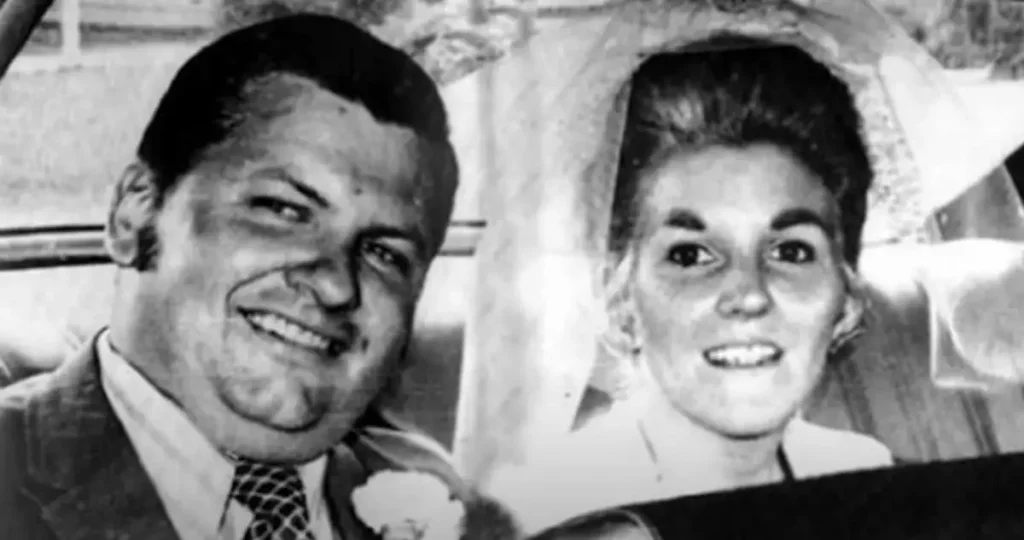Michael Gacy, one of the most notorious serial killers in American history, left an indelible mark on society with his chilling crimes. Known as the "Killer Clown," Gacy's dark past continues to fascinate and horrify people worldwide. His story remains a chilling reminder of how deception and darkness can hide behind a seemingly normal facade.
Michael Gacy's life and crimes are not just a tale of horror but also a case study in criminal psychology. His ability to deceive and manipulate those around him while committing heinous acts is a chilling testament to the complexity of the human mind. As we delve deeper into his life, we uncover a disturbing narrative that continues to haunt the justice system and society at large.
This article explores the life, crimes, and legacy of Michael Gacy, offering insights into his transformation from a seemingly ordinary man to one of the most infamous serial killers in history. Through this exploration, we aim to shed light on the darkness that lurked beneath the surface of his life, helping us understand the factors that led to his crimes.
Read also:The Enchanting World Of Gaylord Hotel A Comprehensive Guide
Table of Contents
- Biography of Michael Gacy
- Early Life and Family Background
- Criminal Career and Modus Operandi
- Arrest and Trial
- Psychological Profile
- Impact on Media and Popular Culture
- Legal Ramifications and Justice System
- The Victims: Remembering the Lost
- Legacy and Historical Significance
- Conclusion: Lessons from the Past
Biography of Michael Gacy
Basic Information
Michael Gacy was born on March 17, 1942, in Chicago, Illinois. Below is a summary of his basic information:
| Full Name | Michael Anthony Gacy Jr. |
|---|---|
| Date of Birth | March 17, 1942 |
| Place of Birth | Chicago, Illinois, USA |
| Occupation | Contractor, Entertainer (as "Pogo the Clown") |
| Known For | Serial Killer, "Killer Clown" |
Early Life and Family Background
Michael Gacy's early life provides critical insights into the formative years that shaped his personality. Born into a working-class family, Gacy's childhood was marked by a troubled relationship with his father, who was often abusive. This environment of tension and fear may have contributed to the psychological issues that later manifested in his adult life.
As a teenager, Gacy exhibited signs of behavioral problems, including petty theft and truancy. Despite these issues, he managed to maintain a facade of normalcy, excelling in sports and earning the respect of his peers. However, beneath the surface, the seeds of a darker personality were already taking root.
Criminal Career and Modus Operandi
Understanding the Crimes
Gacy's criminal career began in the late 1960s when he was convicted of sexually assaulting young boys. After serving time in prison, he reinvented himself as a successful contractor and community figure. However, his true nature resurfaced in the 1970s when he began targeting young men, luring them to his home under false pretenses.
His modus operandi involved offering jobs or housing to vulnerable young men, often runaways or those in desperate situations. Once they were in his control, he would assault, kill, and dispose of their bodies, many of which were later discovered buried beneath his home.
Arrest and Trial
Gacy's arrest in December 1978 came after a series of missing persons reports led investigators to his home. The discovery of human remains buried in his basement shocked the nation and led to one of the most sensational trials in American history.
Read also:Pinkheart Unveiling The Symbolism Significance And Impact
During his trial, Gacy's defense team attempted to argue insanity, but the overwhelming evidence against him led to his conviction on 33 counts of murder. He was sentenced to death, and his execution took place on May 10, 1994, via lethal injection.
Psychological Profile
Exploring the Mind of a Killer
Psychologists and criminologists have long studied Gacy's behavior, attempting to understand the motivations behind his crimes. Many theories suggest that his abusive childhood and unresolved trauma played a significant role in his psychological development.
- Gacy exhibited traits of narcissistic personality disorder, often manipulating those around him for personal gain.
- His ability to maintain a dual identity—respected community figure by day, killer by night—demonstrates a dissociative disorder.
- Experts believe that his fixation on control and dominance over his victims stemmed from deep-seated insecurities and a desire for power.
Impact on Media and Popular Culture
Gacy's story has had a lasting impact on media and popular culture, inspiring numerous books, films, and documentaries. His infamous persona as "Pogo the Clown" has become a symbol of the dark side of entertainment, warning against the dangers of deception and manipulation.
Documentaries like "The Real Story of the Killer Clown" and films such as "Gacy" have brought his story to a wider audience, ensuring that his legacy continues to be examined and debated. These portrayals often focus on the psychological aspects of his crimes, offering viewers a glimpse into the mind of a serial killer.
Legal Ramifications and Justice System
Lessons from the Gacy Case
The Gacy case highlighted several flaws in the justice system, including the challenges of investigating serial crimes and the importance of forensic science in solving complex cases. The discovery of multiple victims in a single location underscored the need for improved protocols in missing persons investigations.
Furthermore, the case sparked debates about the death penalty and its effectiveness as a deterrent to crime. Gacy's execution remains a contentious issue, with advocates on both sides of the argument using his case to support their positions.
The Victims: Remembering the Lost
Among the 33 victims attributed to Michael Gacy, each had a unique story and life cut tragically short. The victims, mostly young men between the ages of 14 and 21, were often from marginalized communities, making their disappearances less likely to attract attention.
Efforts to honor their memory include memorials and support groups for families affected by his crimes. These initiatives aim to ensure that the victims are not forgotten and that their stories continue to be told as a reminder of the importance of justice and accountability.
Legacy and Historical Significance
Michael Gacy's legacy extends beyond his crimes, serving as a case study in the study of criminal behavior and the justice system. His story continues to be examined by criminologists, psychologists, and legal experts, offering valuable insights into the complexities of serial murder and the challenges of investigating such cases.
His impact on popular culture and media ensures that his story remains relevant, serving as a cautionary tale about the dangers of deception and the importance of vigilance in society.
Conclusion: Lessons from the Past
In conclusion, Michael Gacy's life and crimes represent a dark chapter in American history, one that continues to fascinate and horrify people worldwide. Through an examination of his biography, criminal career, and psychological profile, we gain a deeper understanding of the factors that contributed to his heinous acts.
We invite readers to reflect on the lessons learned from Gacy's case and to consider how society can work to prevent similar tragedies in the future. Please leave your thoughts in the comments section below and explore other articles on our site for more in-depth analysis of historical and contemporary issues.
References:
- Geberth, V. J. (1990). "Practical Homicide Investigation." CRC Press.
- Ramsland, K. (2005). "The Human Predator: A Historical Chronicle of Serial Murder and Forensic Investigation." Berkley Books.
- Keppel, R. D., & Birnes, W. J. (2003). "The Psychology of Serial Killer Investigations." Academic Press.


